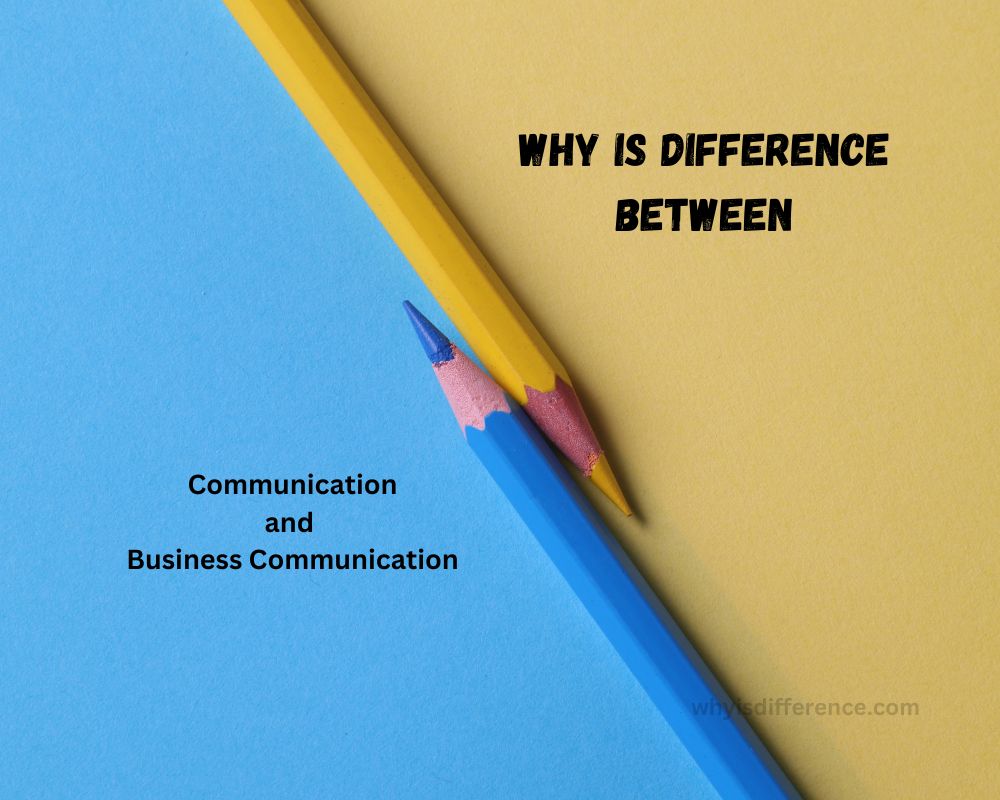In this fast-paced environment Communication is the key to connecting with people communicating ideas, as well as creating connections. This is particularly true in the world of business where efficient communication is essential to success.
While general communication is the many ways we interact with each other in our daily lives, business communication is an area that is specialized and which is focused on the communication of information within the professional setting. Knowing the differences between these two kinds of communication is crucial for anyone who wants to be successful in today’s professional world.
What is Communication?
Communication is the process of sharing information, ideas, feelings, and thoughts between people. It can happen in many ways, such as through speaking, writing, using body language or facial expressions, or even through art and music.

When we communicate, we are trying to express something to someone else, whether it’s telling them how we feel, giving them instructions, or sharing a story. Good communication is important because it helps us understand each other better, avoid misunderstandings, and build stronger relationships, whether with friends, family, or at work. It’s like a bridge that connects people, allowing them to share and understand each other’s worlds.
What is Business Communication?
Business communication is a special type of communication that focuses on sharing information, ideas, and messages in a professional setting. It’s used to exchange information between employees within a company, or between a business and its customers, clients, or other external parties.
Business communication can include things like emails, reports, meetings, presentations, and even social media posts. The main goal of business communication is to make sure that the business runs smoothly, that everyone understands their roles and responsibilities, and that customers and clients are happy with the services or products they receive.

It’s all about being clear, direct, and professional, to make sure that the business achieves its goals and maintains a good relationship with everyone it deals with.
Comparison Table – Communication vs Business Communication
|
Category of Differentiation |
Business Communication |
General Communication |
|
Purpose |
Goal-oriented communication to achieve business objectives. |
Communication for personal and social purposes. |
|
Context |
Typically formal and professional in tone and style. |
Can be casual and informal in tone and purpose. |
|
Tone and Style |
More structured and formal in tone and style. |
Can vary in tone and style, depending on the context and purpose. |
|
Audience |
Specific target audiences, such as employees, customers, or stakeholders. |
May involve communicating with anyone, regardless of their relationship to the communicator. |
|
Structure and Format |
Has a specific structure and format. |
May not have a specific structure or format. |
|
Medium |
May involve written documents, such as reports, emails, and memos. |
May involve both verbal and nonverbal communication. |
|
Language |
Often involves specific jargon and technical language. |
Typically uses everyday language and terminology. |
|
Purpose of Communication |
Often involves persuasive communication, such as sales pitches, proposals, or presentations. |
May involve persuasive communication, but not necessarily in a business context. |
|
Feedback |
Feedback is often given and received more formally and with specific objectives in mind. |
Feedback can be given and received informally and in a more general sense. |
|
Time Frame |
Often has a specific timeline and deadlines. |
May not have a specific timeline or deadlines. |
|
Emphasis on Accuracy |
Often places a high emphasis on accuracy and precision. |
Accuracy and precision may be less important, depending on the context and purpose. |
|
Use of Visual Aids |
May involve the use of visual aids, such as graphs, charts, or images. |
May or may not involve the use of visual aids, depending on the context and purpose. |
|
Conflict Resolution |
Often involves conflict resolution and negotiation. |
May involve conflict resolution, but not necessarily in a business context. |
|
Emphasis on listening |
Active listening is involved in business communication. |
Passive listening is involved in general communication |
|
Consequences |
Can have legal or financial consequences if not done effectively. |
May have social or personal consequences if not done effectively. |
Types of Communication
- Verbal Communication: Involves spoken words.
- Non-Verbal Communication: Communicating without words.
- Written Communication: Involves writing or typing words.
- Visual Communication: Uses visual elements to convey a message.
Types of Business Communication
- Internal Communication: Within the organization.
- External Communication: With parties outside the organization.
- Formal Communication: Structured and often documented.
- Informal Communication: Casual or unofficial exchanges.
Digital and Technological Influence
- Technology and the digital revolution are now an integral part of our lives, changing how we interact and communicate, work or even consider thinking. The rapid development of technology over the past decade has created a new degree of connectivity, ease of use, and technological innovation that has impacted every aspect of our lives.
- The most interesting way that technology and digital influence have been manifested is in the field of communication. The growth of social media and internet-based platforms has changed the way people interact all over the world. Barriers between countries have fallen away and now people can communicate ideas, experiences, and even information instantly. The notion of distance and time is changing because communication happens in real-time, creating an interconnectedness that was previously unimaginable.
- In addition, the advancement of technology has fundamentally changed the way that businesses function. Artificial intelligence, automation as well as data analytics, have been integral to the corporate environment which has streamlined processes, improved productivity, and allowed organizations to make better decisions. These have led to the creation of completely new jobs and industries as well as altering the traditional path to work. Remote work, the gig economy, and freelance work have become more popular and are transforming the nature of work and challenging the established concepts of balance between work and life.
- Education too has been impacted by the power of technology. Digital learning platforms and online tools have opened up access to education, which has allowed students from all backgrounds to gain expertise and knowledge at their speed. The classroom has crossed physical boundaries since online learning environments provide personalization and interactive learning. But, this change is also raising concerns about the efficacy of virtual education as well as the value of face-to-face interaction to learn.
- Digital influence is pervasive throughout all aspects of life and every aspect of our lives, it has caused concerns over safety and privacy. The vast volume of personal information shared and stored in the digital world has provided a fertile environment for cyber threats as well as identity theft. The balance between the benefits of technological innovation and protecting privacy for individuals is now a difficult task for policymakers and individuals. The need for effective cybersecurity measures as well as ethical considerations when developing technology has never been more crucial.
- Social and cultural norms are also subject to change through the influence of digital media. The social media platform has transformed into places to express oneself, engage in activism, and shape public opinions. Ideas and movements can quickly gain momentum and inspire global enthusiasm for a variety of causes. In the same way, the digital world has facilitated echo chambers and has contributed to spreading misinformation that highlights the crucial importance of critical thinking and digital literacy capabilities in the current age.
- The impact of technology and digital media on our society has been proven. It is affecting all aspects of life and has redefined communication as well as education, business, and even culture. While providing unbeatable possibilities for innovation and growth it also poses problems that require thoughtful analysis and proactive steps. As the speed of technological advancement increases society and individuals must navigate the complex terrain with a keen understanding of the potential benefits and risks that are associated with the technological revolution.
Relationship between business and communication
- Effective communication is essential for managing relationships with your staff, customers, and stakeholders.
- Poor communication can ruin relationships, and potentially result in lost sales and a damaged reputation.
Conclusion
The major differences between business communication and regular communication lie in its purpose, context and specific techniques used. Communication refers to exchanging ideas, information, and emotions in various settings such as social interactions, personal relationships or daily conversations; transmitting and receiving messages is part of this process for understanding purposes and conveying meaning.

